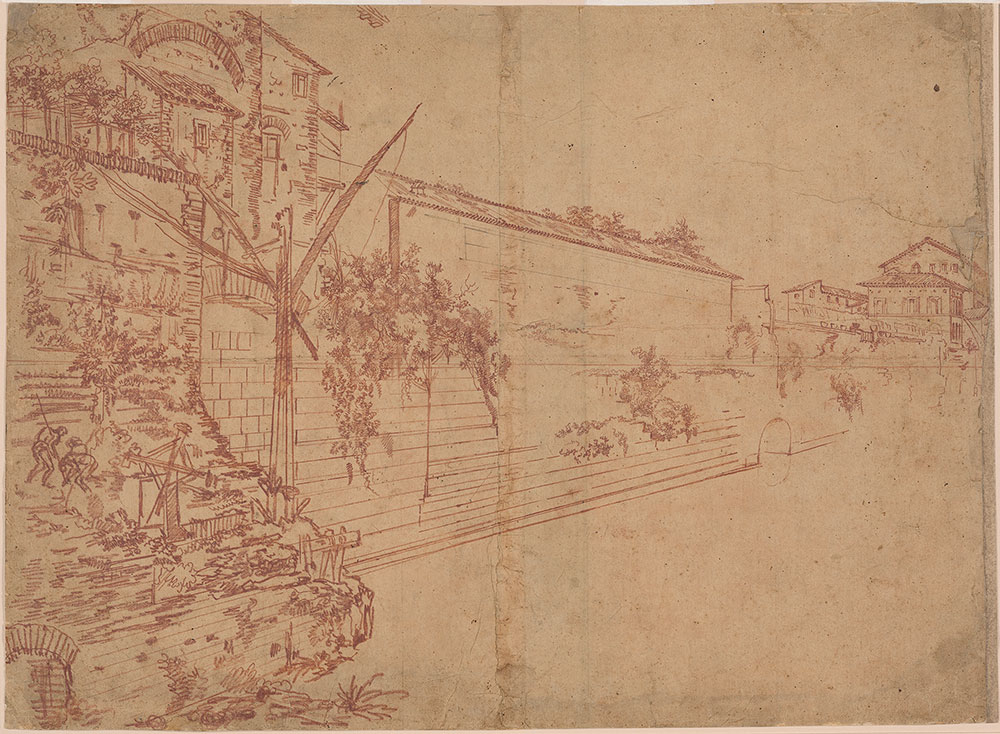
Giovanni Battista Piranesi
View of the Tiber in Rome with the opening of the Cloaca Maxima, 1775
Red and black chalk
Private Collection
John Marciari: Piranesi’s began his series of large Roman views, the Vedute di Roma, in the mid-1740s, and he continued adding to it for the rest of his life, eventually publishing more than 130 depictions of Rome’s principal monuments. This drawing is a preparatory study for one of the later additions, a view of the Tiber River and the mouth of the Cloaca Maxima, a sewer that drained the low-lying areas between Rome’s hills, and which eventually became the main sewer of the Roman city. Piranesi and others praised the Cloaca as a masterful feat of Roman engineering.
Intact preparatory studies for the Vedute are very rare, but this is one of a handful of examples that survive from Piranesi’s last years. The drawing is at the same scale as the print and is clearly a study for it, but what is fascinating is how little information is actually captured in the drawing. The architectural frameworks of the embankment wall and the riverside buildings are set out, but the masonry is not indicated, and the ancient round temple and medieval belltower that rise above the central building are missing completely. Piranesi seems intent on capturing only the most transient aspects of the scene: the overhanging vegetation and the wooden structures erected by the fishermen at left. Piranesi probably made a few additional studies, but when one of his contemporaries asked how he could manage to produce prints from such slight sketches, Piranesi replied, “The drawing is not on my paper, I agree, but it is all here in my head. You’ll see it in the etching plate.”
